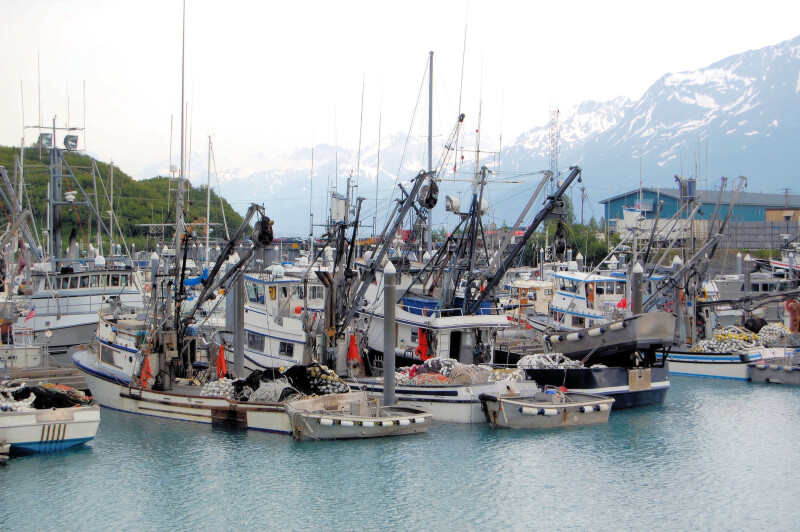A long-running debate over bycatch in the pollock fishery has moved closer to urban Alaska with a new set of proposals aimed at regulating the annual harvest in Prince William Sound. This week, the state Board of Fisheries is considering four proposals that could place sharp restrictions on or even close down the small pollock trawl fishery in the waters east of Anchorage.
Supporters of the proposals point to state data showing that approximately 15 boats, mostly from Kodiak Island, unintentionally catch about 900 king salmon and 900 rockfish each year in their wide-mouth trawl nets. They argue that these fish are crucial to subsistence harvests for local communities, especially the village of Chenega. Boyd Selanoff, a member of the Chenega tribal council, expressed concern about the impact on their way of life.
“The language is disappearing. The culture is disappearing, the subsistence traditions and education are disappearing,” Selanoff reported by the Anchorage Daily News and Nathaniel Hertz. “One of the main sources of life in Prince William Sound — for all of us, not just Chenega — is a healthy fish stock.”
Chenega’s tribal government has submitted three of the four proposals under consideration, with support from conservation group SalmonState, tourism businesses, and members of the public. One proposal would close the fishery altogether, while others would mandate electronic cameras or human observers on trawlers to monitor bycatch and ensure that it is brought back to a processing plant for proper counting.
“If there’s nothing to hide, like they say, why won’t you put an observer on your boat?” Selanoff said. “I’m a fisherman, and we all lie to each other.”
However, the Dunleavy administration and the fishing industry have opposed the proposals. The Department of Fish and Game argues that the pollock harvest can be managed sustainably, and trawl fishermen, who have already seen economic hardship, say that the changes would hurt their livelihoods. “The people down in Chenega, I can understand where they’re coming from. I can understand the emotion of it all — they’re living in an isolated community, and you have all these boats coming into there,” said Paddy O’Donnell, board president of the Alaska Whitefish Trawlers Association. “But it’s not going to do anything for those communities. It’s just a feel-good measure.”
At stake is a yearly pollock harvest worth about $1 million, according to the Department of Fish and Game. While this may seem modest compared to the larger Bering Sea pollock industry, it is vital for the Kodiak fleet as an early-season income source. O'Donnell mentioned the historical connection to local processors in Cordova, noting that while fishermen would prefer to sell locally, no processors there are buying, requiring the fish to be hauled back to Kodiak.
The proposals also include a request for stricter bycatch limits, with one from the Alaska Outdoor Council demanding that pollock fishing in Prince William Sound be allowed only if king salmon bycatch is completely eliminated and if fishing gear avoids contact with the seafloor.
State officials have raised concerns about the vulnerability of rockfish to overharvest, a species that requires long recovery periods. However, trawlers argue that such practices are unlikely to occur in Prince William Sound’s rocky terrain. “Any plane flying over or anyone in a boat transiting along there’s going to see all these rockfish floating,” O'Donnell said. “That has never happened.”
The debate is continuing, with over 1,000 pages of testimony submitted ahead of the Board of Fisheries meeting in Cordova, which is scheduled to run through December 16.
For more information on the ongoing debate, visit Anchorage Daily News.







